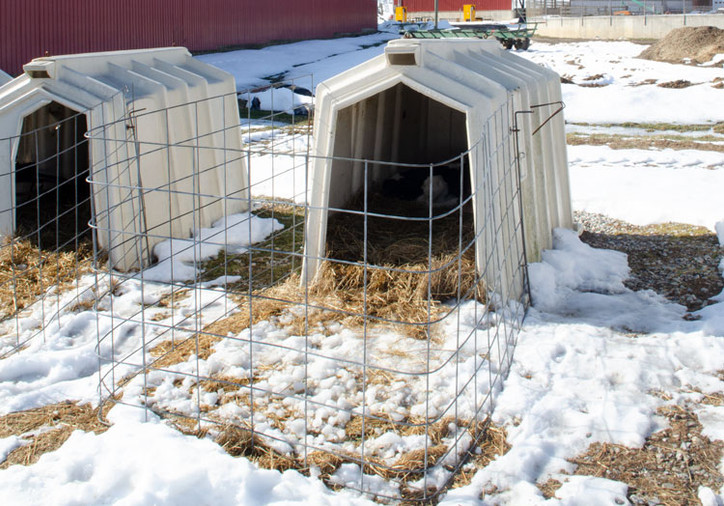Preparing Your Calf Hutches For Winter Weather
Jan 18, 2022
Despite their general hardiness, young calves are susceptible to cold weather. In parts of the country where winter weather brings significant snow and below freezing temperatures, farmers must still provide safe shelter.
We share several tips for winterizing your calf hutches so you can provide the safest environment for your livestock.
Lay A Dry Foundation For Hutches
In the winter, dampness can lead to significant heat loss — that’s why it’s important to keep calves dry. Before you start making changes to your hutches, first be sure they’re placed on an elevated surface that will not accumulate standing water.
You can use gravel to create an elevated surface for hutches that also allows water to flow freely. Sand can also be used, but it may not provide the best drainage.
Position Your Calf Hutches For Optimal Warmth
Another important consideration for your hutches is their positioning relative to both the sun and the prevailing winds in your area.
In the Northern Hemisphere, positioning hutches toward the south will limit their exposure to direct sunlight in the summer and maximize sun exposure during the winter.
In addition, understand the direction of the prevailing winter winds in your area. If possible, position your hutches in a way that their backs are directed towards the wind. You may also want to consider building a windbreak, such as a fence or wall, to prevent direct exposure to wind gusts.
Add Extra Insulation
Straw is often used as bedding in hutches. Straw will absorb moisture and also adds a layer of insulation that helps maintain a calf's natural heat.
The “kneel test” can help you check if a calf has enough straw in their hutch. To perform the test, kneel on the bedding for 20 seconds. If your knee gets wet, then you should change the hay or add to it.
Check For Adequate Ventilation
While preventing excessive drafts will help reduce wind chill and preserve a calf’s body heat, hutches should never be airtight — even in the winter. Livestock waste produces ammonia, and if hutches are not properly ventilated, an excess buildup of ammonia can cause significant health risks for calves and farmers.
To prevent this, be sure your hutches larger ventilation inlets and outlets are sealed, but some level of ventilation is still occurring.
Provide Blankets For Calves
If temperatures drop too low, and the shelter provided by hutches is not enough, calf blankets can be used to provide an additional layer of warmth and protection. If you live in a part of the country known for cold winters, be sure to have calf blankets on-hand in the event they’re needed.
Replace Old Hutches
It’s important to keep your calf hutches maintained, but some of your hutches may simply be too old and damaged to provide your calves with adequate protection from the winter elements. In this case, it’s time to replace them with new hutches.
Farmer Boy has a selection of calf hutches for sale from industry-leading manufacturers, like Calf-Tel, for a range of needs. From standard single calf hutches to large hutches with multiple accessory options, we have the shelters you need to keep your livestock safe this winter.
Not sure what hutch options will work best for you? Give us a call at 1-800-845-3374 and we’ll help you find the right calf hutch for your needs.


